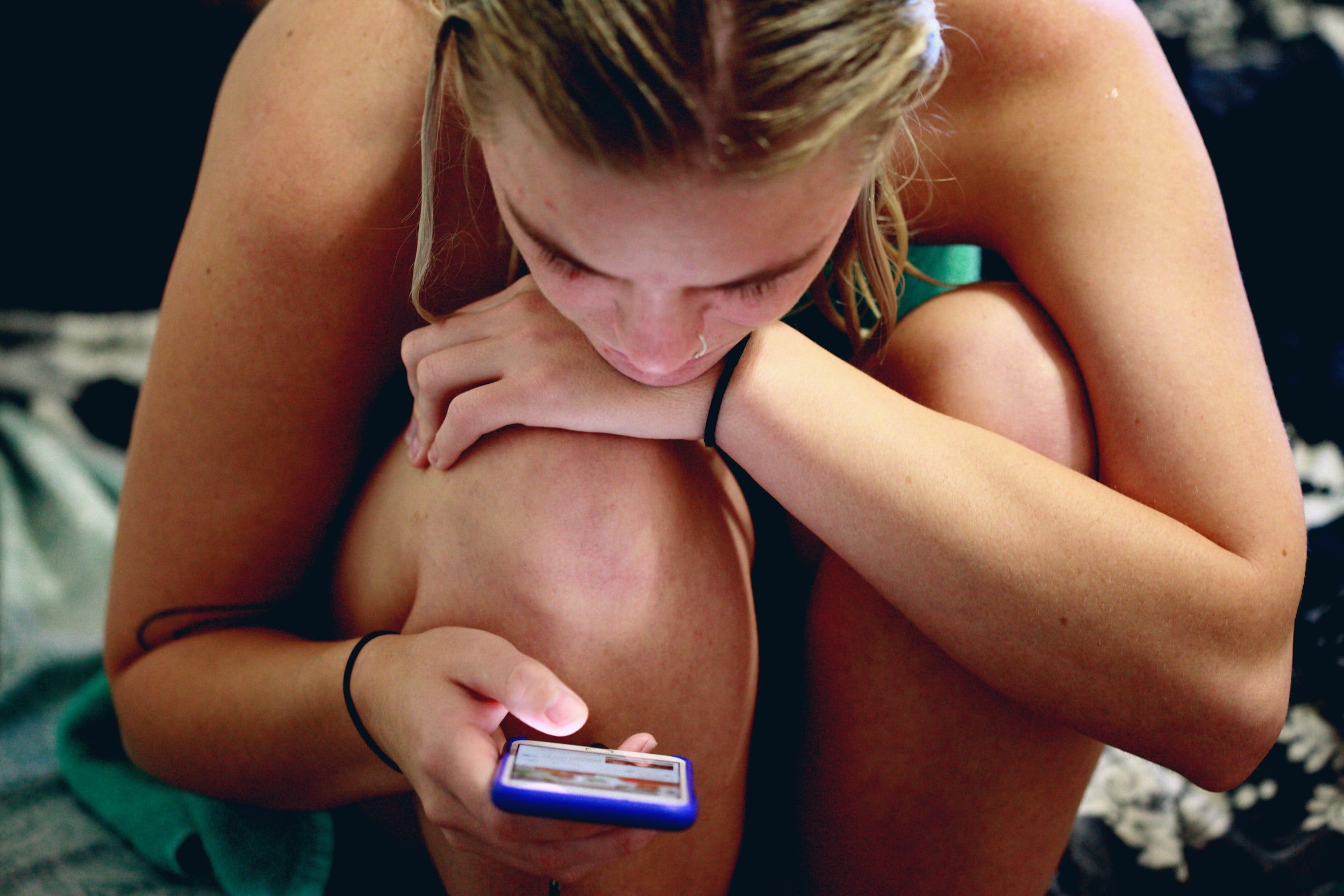A Workable Classroom Phone and Computer Use Policy
How I declared war, and made peace with cell phones, social media, and video games in my classroom
The kids were driving me nuts with their cell phones!
For 12 years I had been living and teaching overseas. When I left the US in 2002, cell phones, social media, and online gaming were not really a thing. When I returned in 2014, they were ubiquitous.
This was a big adjustment for me as a teacher, and one I resisted. While I’m generally open to new technology, competing with online time wasters for kids’ attention made me angry. Checking social media, sending texts, or opening tabs with video games in the middle of my carefully prepared lessons just seemed so… in-your-face-disengaged. So rude. Worse, I saw the constant screen time as enormously detrimental to children’s curiosity and ability to focus on a challenging task.
I’m not alone in my concern. We teachers, more than most people, realize the tremendous impact technology has on our kids. We see the disruption to attention spans, academic integrity, mental health, and social development. Our concerns are well-founded; study after study has identified ways social media and screen time damage children’s well-being. For example, a 2020 study published in the Canadian Medical Association Journal found 39% of teens in Ontario reported moderate to severe mental distress, with corresponding increases in self-harm, eating disorders, and mental health-related hospitalizations. These statistics are heavily correlated with time spent on social media, with some 20% of teens reporting 5 hours of daily social media use (source). A 2018 study of university students found a negative correlation between time spent on social media and online gaming and a student’s GPA (source).
These and many other studies reinforce many classroom teachers’ observations. For me, the sudden transition from the developing world into cell phone culture was jarring. I hated the disruption to my students’ well being, and I vowed to find a way to stop it inside the four walls of my classroom.
Declaring War on Off-Task Electronics in my Classroom
“Cell phone infractions started taking up a huge amount of time and emotional energy. This did nothing to further my instructional goals. It was exhausting.”
The war had begun! I started out nice, politely asking kids to put their phones away when I saw them. That didn’t work well at all; three minutes later the phone would be out again.
I tried dispassionate rule enforcement: if I see your phone, I confiscate it. That worked, but it really pitted me against the kids in a detrimental way. Class became a game of cat and mouse, with the kids always trying to get away with hiding their phones and me always trying to catch them. Cell phone infractions started taking up a huge amount of time and emotional energy. This did nothing to further my instructional goals. It was exhausting.
Next, I bought one of those pocket charts and required students to put up their phones at the beginning of class. This worked, but I still had to constantly monitor who did and didn’t park their cell phones. Some kids simply refused to comply, and others resented it terribly.
“No matter what I tried, my cell phone policy caused smoldering resentment at best and open defiance at worst.”
I asked my colleagues for ideas. Everyone seemed as stymied as I was. One colleague told me, “The phones are here to stay. Trying to fight it is like spitting into the wind”.
I refused to embrace this cynical view, but I had to admit that none of my efforts seemed to work. Honestly, in my first few years back in the US this was probably the issue that frustrated me most in my job. No matter what I tried, my cell phone policy caused smoldering resentment at best and open defiance at worst.
Making Peace With Cell Phones by Focusing on my Students’ Development
I called a truce in this exhausting war thanks to a thoughtful professional development workshop. The presenter encouraged us to approach technology policies in the same way as any other classroom management issue. I began thinking through my classroom management philosophy, which centers on building a classroom community. Some principles I embrace are:
Let students have voice and choice as much as possible.
Articulate why certain behaviors are acceptable and others are not.
Set clear, fair, and reasonable boundaries.
Emphasize positive actions (what we ARE going to do).
When students make behavior mistakes, coach them and discuss better alternatives.
Give students a chance to explain their point of view.
Make the consequence match the infraction in severity and level of public attention.
Be firm, but be kind – always.
I felt sheepish; my efforts to manage students’ phone and computer use didn’t do any of these things! It was all about control – a pure appeal to authority. I didn’t do this in any other area of my classroom management. I thought about how my kids have never experienced life without instant media access. I can resist this reality and be in a constant state of hyper-vigilance… or I can accept it and work to coach my students toward living with technology in a way that is healthy and balanced.
“Now, the way I communicate my technology use expectations is less focused on compliance and more focused on my students’ holistic growth.”
I started thinking about my own media use. I don’t consider myself addicted to or dependent on media. Even so, I’ll occasionally pull out my phone and respond to a quick text during a meeting. I’ll even take a brief call during class if the situation is pressing. I would be quite angry if my principal publicly pointed out my cell phone use during a meeting or walked up and demanded I give her my phone! As an adult and a professional, I can judge when phone use is appropriate. I expect those around me to afford me this level of respect.
This judgment and balance is really what I want for my students. A cell phone crackdown won’t get them there.
I started to re-frame my online media philosophy from “I wish those accursed things didn’t exist” to “Let’s work to balance our online behavior in a way that is conducive to a healthy life.”
I still expect students to refrain from off-task technology use during class. But the way I communicate this expectation is less focused on compliance and more focused on my students’ holistic growth.
For example:
At the beginning of the year, and periodically thereafter, share research-based information with students about attention and the detriments of distraction and multitasking. Tie this information to classroom behavior and the expectation that students will not multitask during class. See my blog post, 3 Activities to Teach Students about Attention, Concentration, and Multitasking for some practical ways to do this.
When you see a student on their phone, start by asking ‘why’. Not all phone use is created equal. I like to ask kids, “Are you texting for educational purposes?” Sometimes the student is addressing some legitimate concern. If the student is worried about (for example) their missing knee pads for volleyball practice, why not give them 90 seconds to resolve the issue with mom, so they can turn their attention back to learning? Brusquely demanding they put away their phone serves to increase the child’s anxiety level and leave their concern unresolved. This is hardly conducive to learning.
Often, the student will sheepishly admit they are off task. I ask them to put their phone in their bag, and that’s the end of it. This gives the student the opportunity to admit their mistake and correct it.
“Ultimately, any management policy will be more effective if the student sees it as coming from a place of genuine concern, rather than from an appeal to raw authority. ”
There are still kids who won’t (or can’t) stay off their electronics. I’ve had success discussing the problems with constant distraction with these students and expressing my concern for their grade and for their overall growth and development. We then work together to articulate a solution. More structured responses (like leaving their phones in a designated space when they enter class, written contracts, behavior charts, discussion with parents, etc.) are appropriate for these students. It works better if the student is on-board with the ultimate goal of using electronics appropriately.
Ultimately, any management policy will be more effective if the student sees it as coming from a place of genuine concern, rather than from an appeal to raw authority. Cell phone and media policies are no exception.
This approach has resolved about 90% of the technology use issues in my classroom. Students understand the ‘why’ and know my expectations are grounded in concern for their well-being. Asking students why they are on the phone honors the fact that they are individuals with concerns beyond the walls of my classroom. Asking them to put away their phone or close their off-task computer tabs gives the opportunity for correction and improvement and involves them in the solution.
Most importantly, my new, student-centered approach takes me out of the role of ‘technology enforcer’ and puts me back into the role I always wanted – a caring adult who coaches and teaches my students.
How do you handle off-task technology use in your classroom? Share in the comments!





